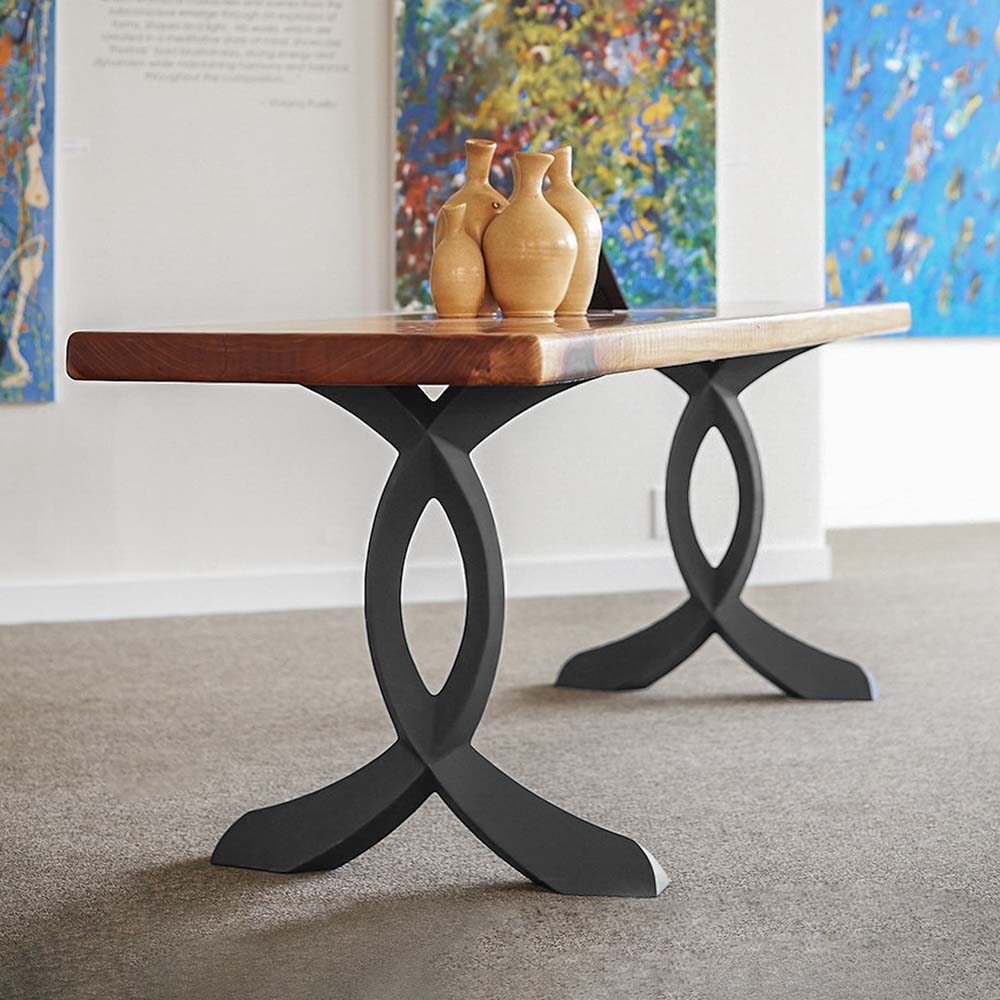Top Trends in Dining Room Table Legs to Elevate Your Dining Space
Top Trends in Dining Room Table Legs to Elevate Your Dining Space
Blog Article
A Detailed Take A Look At Table Leg Styles: Discovering the Suitable Match
Selecting the appropriate dining table leg style is crucial for both visual appeal and practical performance. For those with larger tables, trestle legs make sure strong support, whereas barrette legs introduce a mid-century modern vibe with their minimal design. The x-shaped legs mix modern style with improved security.
Standard 4 Legs
Among the various kinds of table leg designs, the conventional four-leg style stays an ageless selection for many homes. This traditional arrangement supplies a harmonious blend of performance and visual appeals, making it a seasonal fave. 4 legs supply well balanced support, guaranteeing the table stays steady and with the ability of birthing significant weight. This is specifically advantageous for families that often host large gatherings or use their eating table for multiple purposes, such as work or crafting.
From an aesthetic perspective, the traditional four-leg design can be conveniently adjusted to different interior styles. Whether crafted from timber, steel, or a combination of products, these legs can be delicately sculpted, sleek and minimalistic, or anything in between. Their convenience enables them to match both rustic and contemporary setups effortlessly.
Additionally, the straightforward structure of the four-leg design promotes simplicity of movement and positioning within a space. Unlike more facility bases, this style reduces blockages, supplying sufficient legroom for restaurants. In recap, the conventional four-leg table leg design marries sustaining sophistication with practical capability, making it an astute choice for those looking for both form and feature in their dining furnishings.
Pedestal Base
Usually commemorated for its sophisticated and space-efficient style, the pedestal base is a prominent choice to the conventional four-leg arrangement in table leg designs. This unique base usually features a single main column supporting the table top, which can vary in form, from ornately sculpted timber to streamlined, contemporary steel. One of the main benefits of the pedestal base is its capability to make the most of legroom and seating flexibility. Without corner legs, restaurants are managed greater flexibility of activity, making it an excellent choice for round and oval tables that advertise more intimate and inclusive gatherings.
Moreover, the pedestal base's central support can deal with considerable weight, enabling making use of much heavier table tops, such as marble or thick wood. This toughness paired with its visual flexibility makes the stand base a preferred selection in both traditional and contemporary indoor setups. It can seamlessly incorporate with numerous layout motifs, from traditional sophistication to minimal modernity. The central column itself offers a canvas for detailed layouts and creative expressions, adding an aspect of visual interest below the table. In summary, the pedestal base incorporates performance with design, making it an improved and functional choice for diverse eating settings.
Trestle Legs
Trestle legs offer a durable and ageless foundation for eating tables, identified by their horizontal cross-bracing and strong assistance here are the findings light beams. Stemming from medieval times, this layout has evolved yet preserved its vital framework, making it a seasonal favorite in both standard and contemporary setups. The central trestle beam of light, frequently supported by 2 or more upright messages, supplies extraordinary stability, enabling for larger table sizes without the demand for extra legs.
A significant benefit of trestle leg tables is the ample legroom they supply. Unlike tables with four edge legs, the lack of obstructions at the table's edges gives unobstructed room for chairs and diners, boosting comfort and availability. This makes trestle tables ideal for fitting bigger gatherings, whether in a dining area or a banquet hall.
The visual versatility of trestle legs is notable. Offered in a variety of materials such as wood, steel, and composite, they can be ended up to complement a large range of interior styles. From rustic farmhouse to sleek modern styles, trestle legs can be tailored to suit individual tastes. Their enduring appeal and practical advantages make trestle legs an engaging selection for those looking for both design and functionality in their eating table.
Barrette Legs

The charm of barrette legs depends on their simpleness and versatility - dining room table legs. Offered in an array of materials, consisting of steel and brass, they can be finished in many shades to complement different indoor designs. Whether matched with a rustic wooden table top or a modern glass surface, barrette legs easily blend capability with a touch of vintage appeal
Durability is one more remarkable feature of hairpin legs. Regardless of their delicate appearance, these legs are engineered to birth significant weight, ensuring the table stays stable and safe. In addition, they are relatively easy to install, making them a prominent option for do it yourself fanatics and professional furniture makers alike.
X-Shaped Legs

Built from products such as steel, timber, or a combination of both, X-shaped legs why not look here can be tailored to match different layout preferences. Steel legs usually lend a smooth and commercial feeling, perfect for loft-style apartments and contemporary dining spaces.
Moreover, the design behind X-shaped legs guarantees even weight circulation, decreasing the risk of wobbling and improving durability. This makes them particularly appropriate for larger table that need added assistance. Essentially, X-shaped legs blend practical engineering with modern aesthetics, making them a timeless choice for diverse eating atmospheres.
Final Thought
A thorough understanding of eating table leg styles reveals the distinctive features and advantages of each layout. Trestle legs make sure durable why not try this out support for larger tables, and barrette legs introduce a mid-century modern-day aesthetic.
Report this page